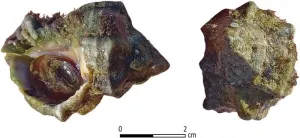EMBARGOED FOR RELEASE UNTIL 4:00 P.M. ET, WEDNESDAY, APRIL 16, 2025
MINNEAPOLIS — A new study has found important clues about the roles age, sex, hormonal changes and genetics play in how certain biomarkers for dementia are expressed in the blood, according to a study published on April 16, 2025, online in Neurology®, the medical journal of the American Academy of Neurology.
“Blood tests that detect biomarkers for Alzheimer's disease and other dementias are emerging and as these tests are further developed, they are becoming important tools for understanding and diagnosing these conditions,” said study author Hannah Stocker, PhD, MPH, of Heidelberg University in Germany. “Our findings provide valuable insights into how age, sex, genetics and hormonal changes during menopause are linked to three biomarkers believed to influence a person’s risk of dementia.”
Researchers analyzed data from a larger 17-year study, comparing 513 people who developed dementia during the study to 513 people who remained free of dementia during that time. The participants had an average age of 64 at the start of the study.
Researchers took blood samples from participants three times during the study to measure levels of three biomarkers: neurofilament light chain proteins, glial acidic proteins and phosphorylated tau 181. Neurofilament light chain proteins are found in the blood when nerve cells are injured or die. Glial acidic proteins are released when cells work to repair injury. Phosphorylated tau 181 is linked to the buildup of amyloid proteins in the body, which occurs in Alzheimer’s disease.
Researchers then compared levels of the biomarkers in people with and without dementia in the following ways: over time as people aged; in male and female participants; in people with and without a gene linked to Alzheimer’s; and in female participants before and after menopause.
After adjusting for age, sex, and APOEe4, a genetic biomarker that indicates a strong risk of Alzheimer’s disease, researchers found that an older age was tied to higher levels of all three markers.
For neurofilament light chain proteins, people age 75 had an average of 25 picograms per milliliter (pg/ml) compared to people age 50 with an average of 10 pg/ml. For glial acidic proteins, people age 75 had an average of 140 pg/ml compared to people age 50 with an average of 45 pg/ml. For phosphorylated tau 181, people age 75 had an average of two to three pg/ml compared to people age 50 with an average of 0.5 to 1.5 pg/ml.
Researchers also found that female participants had higher levels of glial acidic proteins, while male participants had higher levels of neurofilament light chain proteins.
In addition, they found people who had the APOEe4 gene had higher levels of tau and glial acidic proteins.
Lastly, the study found that female participants who had not yet gone through menopause had higher levels of glial acidic proteins, which Stocker noted may be due to having higher levels of sex hormones. Stocker said previous studies have found a link between sex hormones and neuroinflammation.
“Gaining a better understanding of these biomarkers will help improve our ability to test for dementia in the future with simple blood tests,” said Stocker. “Our research underscores the need to further explore these biomarkers, including during menopause, in the development of dementia.”
A limitation of the study was that participants were of European descent, so the results may not be the same for other populations.
The study was supported by the German Alzheimer Forschung Initiative.
Discover more about dementia at BrainandLife.org, from the American Academy of Neurology. This resource also offers a magazine, podcast, and books that connect patients, caregivers and anyone interested in brain health with the most trusted information, straight from the world’s leading experts in brain health. Follow Brain & Life® on Facebook, X, and Instagram.
The American Academy of Neurology is the leading voice in brain health. As the world’s largest association of neurologists and neuroscience professionals with more than 40,000 members, the AAN provides access to the latest news, science and research affecting neurology for patients, caregivers, physicians and professionals alike. The AAN’s mission is to enhance member career fulfillment and promote brain health for all. A neurologist is a doctor who specializes in the diagnosis, care and treatment of brain, spinal cord and nervous system diseases such as Alzheimer's disease, stroke, concussion, epilepsy, Parkinson's disease, multiple sclerosis, headache and migraine.
Explore the latest in neurological disease and brain health, from the minds at the AAN at AAN.com or find us on Facebook, X, Instagram, LinkedIn, and YouTube.
END
How do age, sex, hormones and genetics affect dementia biomarkers in the blood?
2025-04-16
(Press-News.org)
ELSE PRESS RELEASES FROM THIS DATE:
NSF NOIRLab astronomer discovers oldest known spiral galaxy in the Universe
2025-04-16
Large, grand-design spiral galaxies like our own Milky Way are common in the nearby Universe. But they have proven hard to find in the early Universe, which is consistent with expectations that large disks with spiral arms should take many billions of years to form. However, assistant astronomer Christina Williams of NSF NOIRLab, which is funded by the U.S. National Science Foundation, has discovered a surprisingly mature spiral galaxy just one billion years after the Big Bang [1]. This is the most distant, earliest known ...
Iron Age purple dye "factory" in Israel was in operation for almost 500 years, using mollusks in large-scale specialized manufacturing process
2025-04-16
Iron Age purple dye "factory" in Israel was in operation for almost 500 years, using mollusks in large-scale specialized manufacturing process
Article URL: https://plos.io/44elLDX
Article title: Tel Shiqmona during the Iron Age: A first glimpse into an ancient Mediterranean purple dye ‘factory’
Author countries: U.S., Israel
Funding: The author(s) received no specific funding for this work. END ...
Even vegans who get enough total protein may fall short for some essential amino acids
2025-04-16
In a new study of people with long-term vegan diets, most ate an adequate amount of total daily protein, but a significant proportion did not meet required levels of the amino acids lysine and leucine. Bi Xue Patricia Soh and colleagues at Massey University, New Zealand, present these findings in the open-access journal PLOS One on April 16, 2025.
Proteins are made up of various molecular “building blocks” known as amino acids. While the human body can synthesize most of the amino acids we need to live, we completely rely on the ...
RoboBee comes in for a landing
2025-04-16
The Harvard RoboBee has long shown it can fly, dive, and hover like a real insect. But what good is the miracle of flight without a safe way to land?
A storied engineering achievement by the Harvard Microrobotics Laboratory, the RoboBee is now outfitted with its most reliable landing gear to date, inspired by one of nature’s most graceful landers: the crane fly.
Publishing in Science Robotics, the team led by Robert Wood, the Harry Lewis and Marlyn McGrath Professor of Engineering and Applied Sciences in the John A. Paulson School ...
“Ban-the-Box” policy did not effectively help job applicants with criminal records in one analysis
2025-04-16
Analysis of job applicant data from one large employer suggests that a policy meant to improve employment prospects for people with criminal records did not actually lead to changes in job offers for people with records. Deborah Weiss of Northwestern University, U.S., and colleagues present these findings in the open-access journal PLOS One on April 16, 2025.
Parts of the U.S. have introduced “Ban-the-Box” (BTB) laws, which aim to improve job prospects for people with criminal records. ...
Sunscreen, clothes and caves may have helped Homo sapiens survive 41,000 years ago
2025-04-16
ANN ARBOR—Ancient Homo sapiens may have benefitted from sunscreen, tailored clothes and the use of caves during the shifting of the magnetic North Pole over Europe about 41,000 years ago, new University of Michigan research shows.
These technologies could have protected Homo sapiens living in Europe from harmful solar radiation. Neanderthals, on the other hand, appear to have lacked these technologies and disappeared around 40,000 years ago, according to the study, published in Science Advances and led by researchers at Michigan Engineering and the U-M Department of Anthropology.
The team found ...
"Big surprise": astronomers find planet in perpendicular orbit around pair of stars
2025-04-16
Astronomers have found a planet that orbits at an angle of 90 degrees around a rare pair of peculiar stars. This is the first time we have strong evidence for one of these ‘polar planets’ orbiting a stellar pair. The surprise discovery was made using the European Southern Observatory’s Very Large Telescope (VLT).
Several planets orbiting two stars at once, like the fictional Star Wars world Tatooine, have been discovered in the past years. These planets typically occupy orbits that roughly align with the plane in which their host stars orbit each ...
Astronomers find rare twist in exoplanet’s twin star orbit
2025-04-16
Astronomers have discovered a planet that orbits at a 90-degree angle around a rare pair of strange stars – a real-life ‘twist’ on the fictional twin suns of Star Wars hero Luke Skywalker’s home planet of Tatooine.
The exoplanet, named 2M1510 (AB) b, orbits a pair of young brown dwarfs — objects bigger than gas-giant planets but too small to be proper stars. Only the second pair of eclipsing brown dwarfs known – this is the first exoplanet found on a right-angled path to the orbit of its two host stars.
An international team of researchers led ...
Crystal clues on Mars point to watery and possibly life-supporting past
2025-04-16
A QUT-led study analysing data from NASA’s Perseverance rover has uncovered compelling evidence of multiple mineral-forming events just beneath the Martian surface – findings that bring scientists one step closer to answering the profound question: did life ever exist on Mars?
The QUT research team led by Dr Michael Jones, from the Central Analytical Research Facility and the School of Chemistry and Physics, includes Associate Professor David Flannery, Associate Professor Christoph Schrank, Brendan Orenstein and Peter Nemere, together with researchers from North America and Europe.
The findings were published in the prestigious journal ...
Microbes in Brooklyn Superfund site teach lessons on fighting industrial pollution
2025-04-16
Using advanced DNA sequence analysis, a research team led by NYU Tandon School of Engineering's Assistant Professor Elizabeth Hénaff has discovered that tiny organisms in Brooklyn's highly contaminated Gowanus Canal have developed a comprehensive collection of pollution-fighting genes.
The findings were published in the Journal of Applied Microbiology on April 15, 2025.
The team identified 455 species of microorganisms wielding 64 different biochemical pathways to degrade pollutants ...






